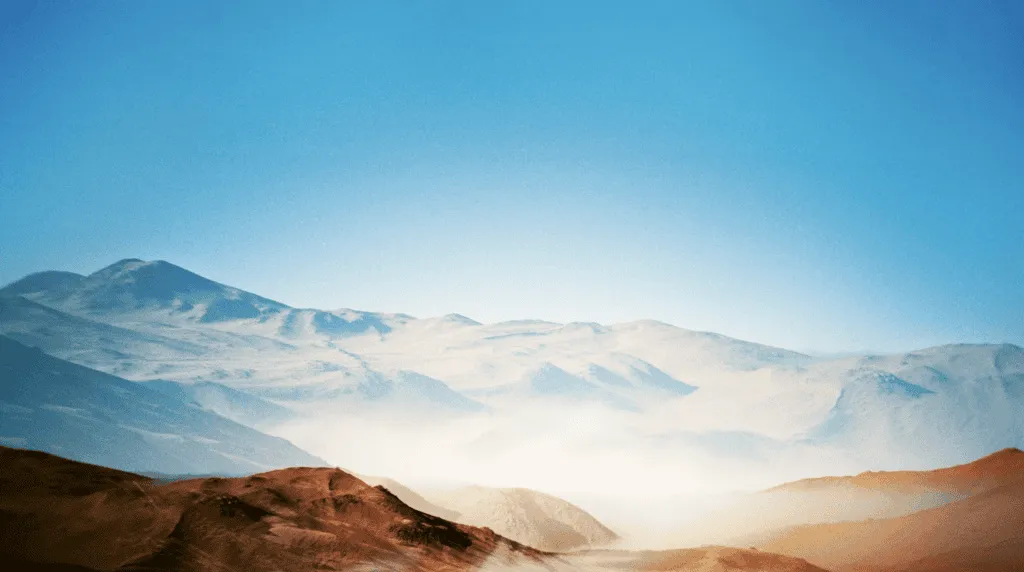

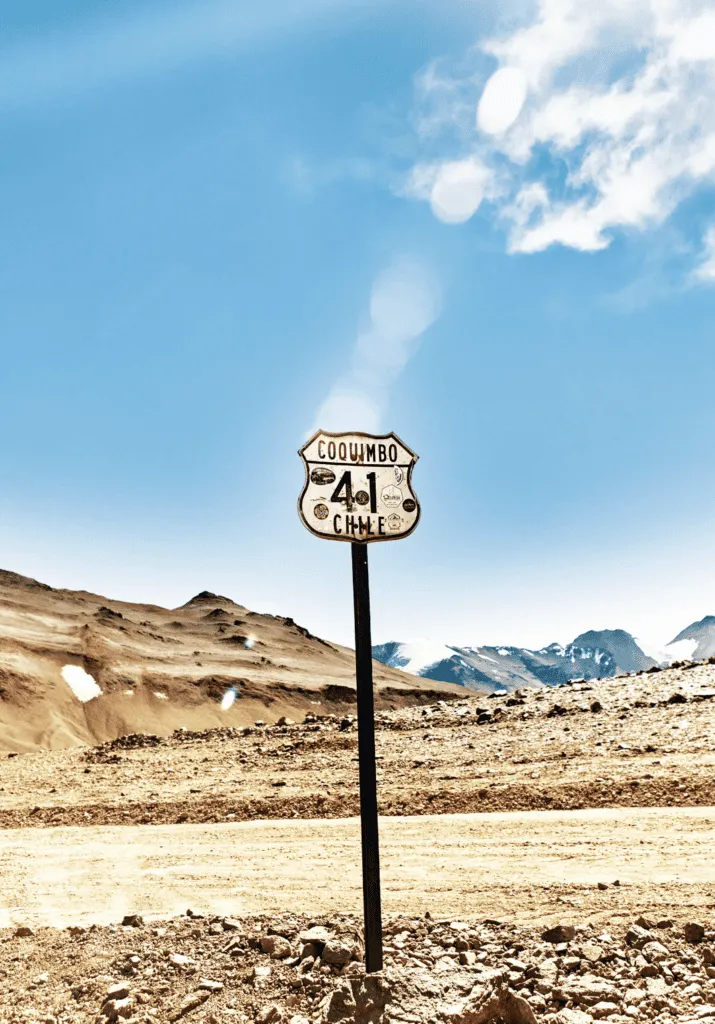
Road trips mean untold adventures, widescreen wilderness and striking out alone. On a dramatic ride from Argentina to Chile, Stanley Stewart traverses the continent’s highest peaks to the Pacific coast.
Stanley Stewart is an acclaimed travel writer with over two decades of experience writing for publications on both sides of the Atlantic. He is a regular contributor to The Sunday Times and The Daily Telegraph, where his work has won numerous awards, including Travel Writer of the Year on six occasions. Here for Condé Nast Traveller, he shares his experience as a guest of Plan South America.

Wherever you are in South America, you wonder about these mountains. The Andes are the gravitational pull of the continent, the long shadow, the backbone. They haunt the imagination.
On the Amazon, you wonder what kind of mountains could possibly produce a river of this magnitude. On the wide steppes of Patagonia, you are always waiting for them to appear, for that first glimpse of snow peaks emerging from tangled clouds in the west. In a vertiginous village in the Peruvian Andes, I once met a woman who talked of their purity, of how the mountains were an escape from the corruption of the valleys and the lowlands and the towns.
They’ve never been just geography. The Andes have defined borders, shaped histories, stolen lives, broken hearts, inspired poetry, forged ancient civilisations, fed and watered a continent. When the clouds parted and the conquistadors first glimpsed them, they dreamed of gold and silver. When the Incas gazed up at those dizzy peaks, they saw gods and climbed the summits.
Standing outside we talked about the Paso de San Francisco, the Andean pass I would cross into Chile the following day. ‘It is almost as high as Mont Blanc, the highest summit in Europe,’ the priest said. His robes flapped about his legs as dust devils whirled across the plain. ‘A hundred years ago they brought a piano across the Paso de San Francisco on the backs of mules. It was for the mission here. In that time, civilisation came over the mountains from Chile: pianos, books, icons – and wonderful jars of marmalade from England.’
That night, in the big bedroom at the end of the passage in the Estancia Las Pircas, I woke to the sound of shutters banging. When I got up and pulled aside the curtains, I could see the moonlit trees around the house tossing madly in the wind, their branches bent at impossible angles, their leaves stripping away in gusts of yellow. It was the zonda, the wind that comes down fromthe passes of the High Andes. They say it is a crazy wind that unsettles people, that it shreds nerves, shakes beliefs, changes lives. In Catamarca they can blame the zonda for anything.
The following morning I had arranged to meet a guide in the small market town of Fiambalá. Nestor was going to accompany me as far as the Argentine border post at the height of the Paso de San Francisco. With his careful manner and elaborate gentility, he had an otherworldly air. In the car he perched on the front seat beside me, his hands on the dashboard, gazing at the mountains ahead. I imagined him as a character from Tolkien and kept expecting to turn around and find him with a long-stemmed pipe and a cloak, the Bilbo Baggins of Catamarca.

It helped that the landscapes were becoming fantastical. From the open valley of the Río Chaschuil, the road suddenly plunged into narrow defiles where the rock was blushed with surreal mineral colours – crimson, verdigris, malachite, violet. Pitched upwards at convoluted angles, the strata of these rock faces bore the drama of Andean creation, of the clash of tectonic plates. ‘The Andes are young, only about 60 million years old,’ Nestor was saying, his hands raised, his long fingers swirling. ‘The continents were shifting, the oceans widening.’ He shook his head as if he had been caught up in this chaos himself.
Eventually the road broke free of gorges, and we emerged into a higher, more ethereal world. On a plateau of pale grasses, we passed a refuge hut standing on the roadside like a lonely bus shelter. In the thin air I had begun to feel dreamy and disorientated. Condors circled, vicuñas with swanlike necks grazed on the shores of black mountain lakes, and once I spotted a group of pale flamingos wading in the dark shallows, presumably longing to be pinker.
As the road climbed, the great snow peaks of the High Andes floated into view, one by one, rising from behind intermediate mountains, like the main act coming through a chorus line.
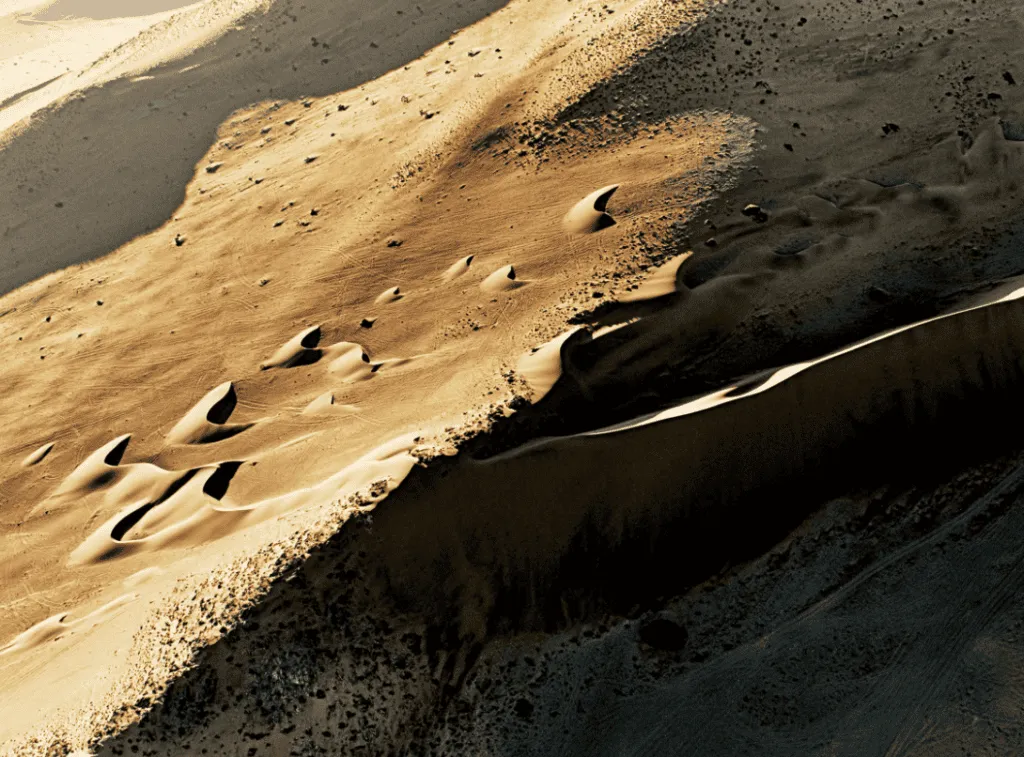
‘Los Seismiles,’ Nestor said. ‘The Six Thousands, the highest points of the Andes, all over 6,000 metres.’ There are more than a dozen of these giants ranged around the Paso de San Francisco. Nestor introduced them like old friends. There was Incahuasi, more than a mile higher than Mont Blanc, its flanks disfigured by ancient lava flows, its summit home to an Incan ceremonial platform. There was Ojos del Salado, Eyes of Salt, at 6,893 metres the tallest active volcano in the world. Beyond was Cerro El Muerto, the Dead One, its southern slope armoured with glaciers.
At the height of the pass, where a tattered Argentine flag fluttered above the border post, Nestor shook hands with the officials. The zonda buffeted the car. He leaned in at the window to say goodbye. ‘Don’t linger,’ he said. ‘We don’t belong here.’
I watched him in the rear-view mirror as I drove into Chile, and thought about his odd comment. As part of the rescue teams based at Fiambalá, Nestor knew how alien these mountains were. On the way up he had told stories about ill-prepared trekkers, about people who had been saved and people who had died.

The thrill of these peaks is that they are not part of our world and can never be. Mountaineers may come and go, ‘conquering’ summits; travellers may cross these dizzy passes, hoping not to suffer altitude sickness while gaping at the stunning vistas. If there are angels here, we will not see them. Indeed, this is not a place where we belong. When we ascend to these passes, some balance tips. In the world we think of as ours, we are suddenly out of place, vulnerable and insignificant. Among these magnificent and alien summits, we are humbled. And humility about our planet is a lesson we are still learning.
The no man’s land between the Argentine and Chilean border posts stretches more than 100km across the heights of Paso de San Francisco, an eerie landscape of snow and black rock. An arena of stark new peaks loomed about me – Cerro Vicuñas, Barrancas Blancas, El Ermitaño, Copiapó and El Solo, at 6,190 metres, consisting entirely of dark sand.
Then I fell into Chile on a road that was only a year old. For four hours I drove downwards, switchbacking through a complex mountainscape. Beyond the confinement of the gorges known as La Salta, the Jump, I emerged on the Salar de Maricunga, a long altiplano of salt flats, lagoons and gravel plains scarred by floods and avalanches. Finally, at the bottom, I found the Atacama Desert.


Originally, this stretch of coast was a family secret. They came every summer from Santiago to camp, to swim, to explore. They looked for treasure reputedly buried by British pirates, snorkelled for the best scallops in the Pacific and kayaked to offshore islands. They found the jawbones of whales and the teeth of megalodons, the giant ancestors of sharks. They lay awake at night on the beach watching for shooting stars among the dense constellations.
Night was falling. The city of Copiapó appeared like a mirage, shimmering and unreal. When it vanished behind me, as miraculously as it had appeared, I wondered if I had imagined it. The road was empty again. The dark country on either side showed no lights. Following the GPS, I turned down a country track. The low scrub of the Atacama was reduced to the beam of my headlights. Startled, a heron flew up and was swallowed by the night.
At the end of the track, I stopped and climbed out of the car. There was the sound of waves and the cry of sea birds. I followed a path illuminated by lanterns among the rocks and found myself suddenly at Wara Nomade, a new beach camp on the Pacific coast.
The spectacle of its landscapes has made the Atacama a popular place, drawing 300,000 visitors a year, almost all of them converging on the old trading town of San Pedro de Atacama in the north. But deserts need to be places of solitude and escape, and in the Atacama this means heading to the splendid isolation of the south, where a handful of people are beginning to explore the stunning coast and mountain ramparts. It is here that Susana Aránguiz built her camp.
Half a lifetime later, Susana, now a renowned Chilean designer responsible for the elegant Awasi Atacama in San Pedro de Atacama, has returned to this remote place to create Wara Nomade, an homage to childhood memories of distant summers. I spent two days here living the life as a beachcomber on the edge of the Pacific, lolling on Bali beds among cushions and billowing fabrics, swimming between Pacific rollers, eating fabulous salads and grilled fish while pelicans perched on the rocks and bottlenose dolphins passed in the bay. At night I gazed at stars as thick as grapes before retiring to a tent that would have suited a sultan with excellent taste in Andean fabrics.
One morning I set off with a guide for one of Atacama’s most singular features – a great sand sea just to the north of Copiapó. Covering some 300 square kilometres, they were the kind of pristine dunes that make filmmakers salivate and desert travellers go weak at the knees. Though dunes hardly does them justice. These are mountains of fine blonde sand with summits and valleys, with spectacular ridges and canyons, all sculpted by winds into soft, sensual form. As the creeping light of the predawn gradually began to extinguish the stars, we arrived on a saddle ridge, where the guide unpacked a grand breakfast picnic. We drank coffee and munched warm pastries while a wilderness of dunes took form around us, until the sun ran gently along the ridgelines like a caress.
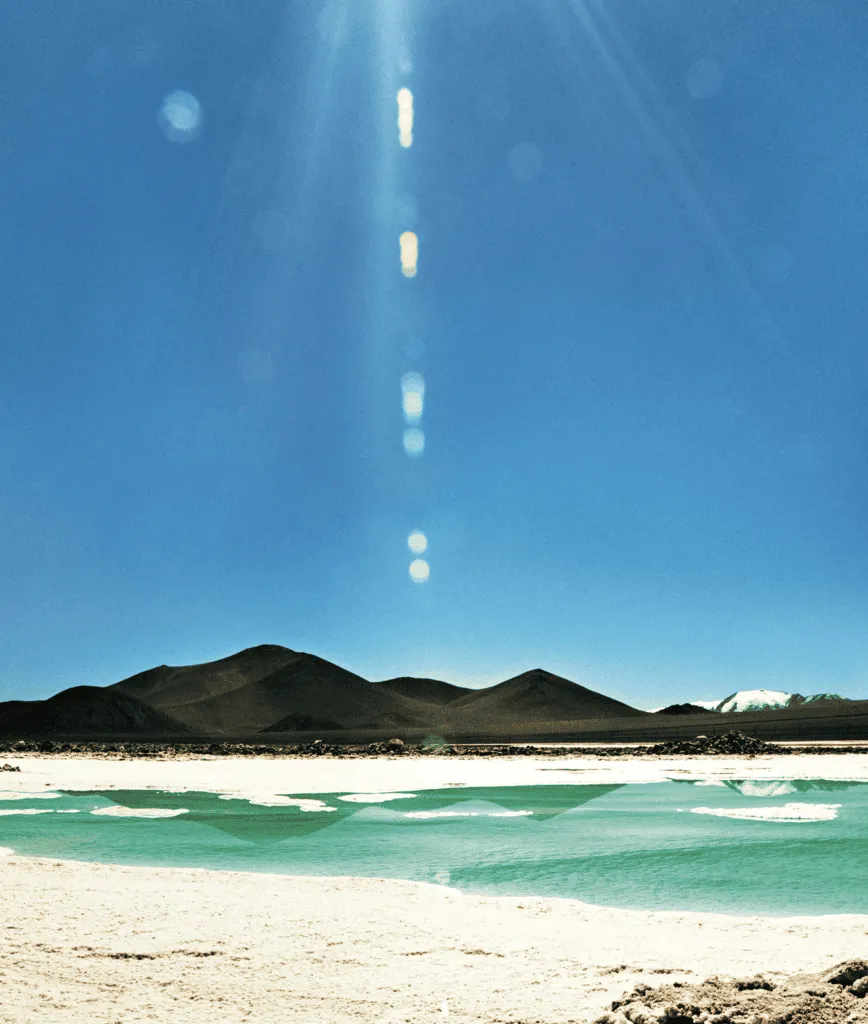
My itinerary was a round trip. After a few days on the Pacific coast, I was heading back to Argentina, back across the Andes, this time over the Paso de Agua Negra. From La Serena I followed the Elqui Valley, full of orchards and vineyards and sweet colonial towns, into the mountains, along a route that the Inca had taken. In the lower gorges I could see their old highway buttressed above a green river with courses of masonry.
A second Andean pass within the space of a single week seemed like surfeit of wonder. Paso de Agua Negra was just as impressive. I kept stopping and looking at mountain vistasso vast and empty that they were somehow heart-rending. Somewhere up there, in that thin air, I began to cry without really understanding why.
I would have been more heartbroken coming down out of that pass had the Calingasta Valley not been so beautiful. In the morning I woke in a lovely adobe hotel in the oasis town of Barreal, where breakfast was served in the garden: bread and honey, fruit and bowls of café con leche. Dappled sunlight leaked through poplar trees full of birdsong.
Away to the west stood the great ramparts of the Andes. Prominent among them was the colossal snow peak of Aconcagua, the highest mountain in the Americas. Just over 30 years ago, an Inca mummy wrapped in Andean textiles was discovered near its summit. For those who left him there, he was an angel.
I know so little about angels, but all morning in Barreal I could not take my eyes off that mountain.
Related Stories

Exploring Chile’s Wine Country: Top Vineyards & Lodges

A Deep Dive into the Yucatán with Stanley Stewart – The Financial Times

Late Nights and Tall Tales in Buenos Aires with Stanley Stewart – The Times
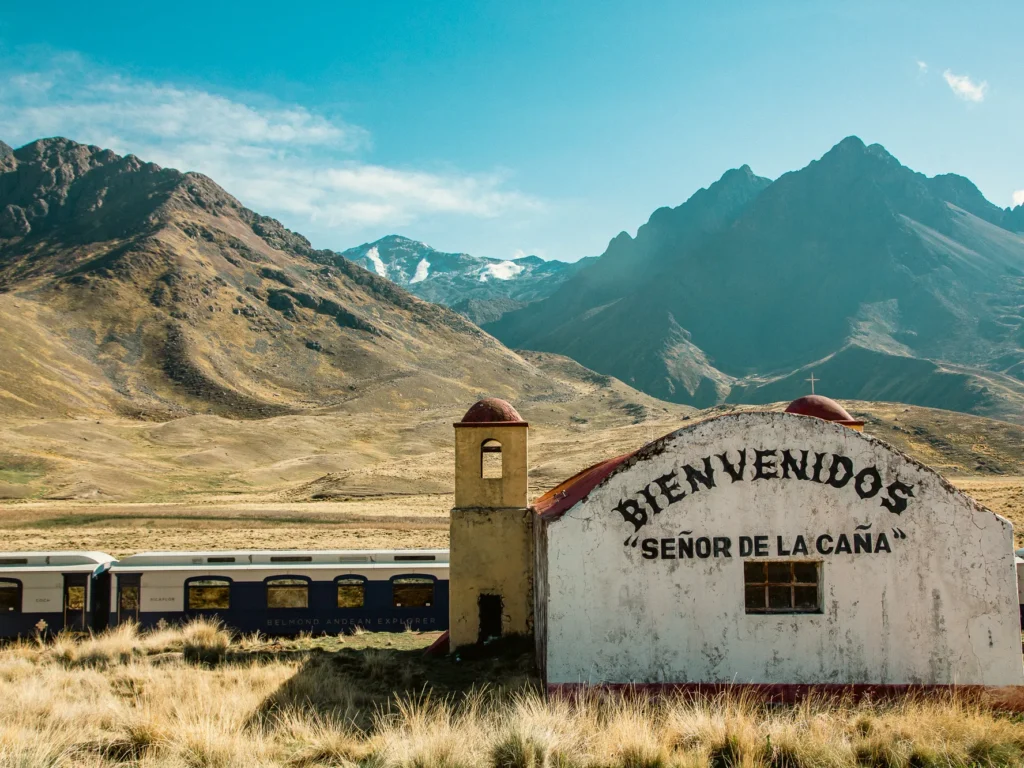
A Second Golden Age of Train Travel in South America
@plansouthamerica




